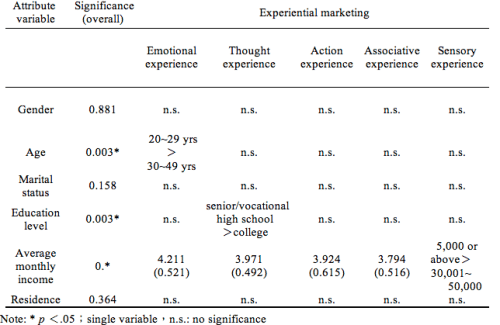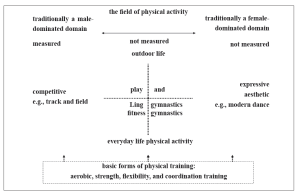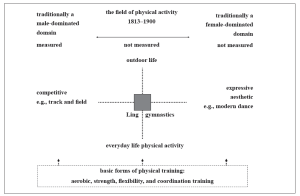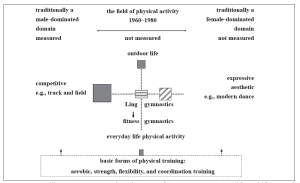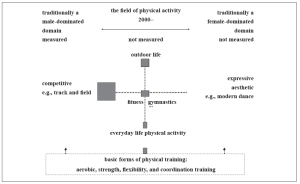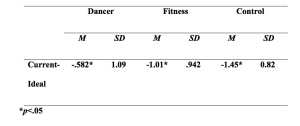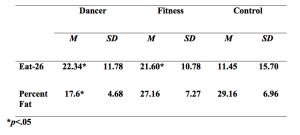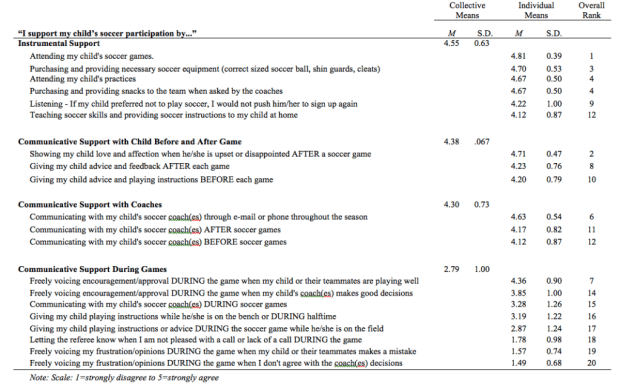A Study of the Effect of Experiential Marketing on Customer Purchase Intention: Case Study of the Taipei International Sports Cycle Show
Submitted by Chao-Chien and I-Han, Chen
ABSTRACT
The meeting, incentive, convention, and exhibition (MICE) industry has gradually flourished. However, the market encountered at exhibitions has increasingly changed into the commercial buyers’ market. Through experiential marketing, the industry can enhance its contact and communication with potential customers by participating in exhibitions, and thus, increase customer intent to purchase for products highlighted and exhibited at this specific type of venue. In recent years, one industry, in Taiwan has used sports marketing through MICE as a platform to market sport bikes. Manufacturers and business owners alike used the exhibition to reach the potential customer base, and as a result, this study conducts a questionnaire-type survey at the Taipei International Sports Cycle Show. The main purposes of this study are to investigate the degree to which experiential marketing influences customer intent on purchase choices and to assess differences in experiential marketing across different demographic variables. The results of this study are as follows:
• There is a significant difference in experiential marketing across different demographic variables, including age, educational level and average monthly income.
• There is a significantly positive correlation between experiential marketing and the purchase intention of customers participating in exhibitions.
• All attributes of experiential marketing have a significantly positive influence on purchase intention.
INTRODUCTION
Taiwan is highly regarded worldwide as having an excellent reputation for its outstanding manufacturing of bicycles. In the past, the bicycle was considered merely a traditional transport vehicle; however, recently and in a very short period of time for many Taiwanese, cycling has become a popular recreational activity because of the rising awareness of environmental protection, energy saving and carbon reduction policy, and an increased focus on exercise, attention to health issues and seeking an improvement in overall quality of life (21). Until very recently, the bicycle industry was monopolized by a single giant manufacturing company and this corporation was one of the most dominant manufacturers of bicycles, having occupied the largest output of all bicycles within the sports cycling market. As a result of this company having the monopoly for the production of sports cycles, the global revenues amounted about $ NT 300 million, and annual production and sales targeted about $ NT 4.8 million bicycles (5). In 1985, Taiwanese manufactured bicycles were far greater in overall annual production than the amount produced in Japan. This earned Taiwan the reputation as “World Bike Kingdom” (20). Additionally, with the extremely rapid progress of information and technology, not only did the development of the national economy advance quickly, but also international businesses had increased growth as well. As these companies grew, many of them began utilizing the marketing strategy of exhibition venues, which contributed to the development of the meeting, incentive, convention, and exhibition (MICE) industry (32). Recently, the bike industry in Taiwan is without exception. It has held lots of international sports cycling exhibition for selling its own brand of sports bike by means of the MICE promotion platform, the Taiwanese sports bike industry has participated lots of international sports cycling exhibition for selling its own brand of sports bike. These products do not only sell in the Taiwanese domestic market, but also globally, using exhibition venues such as the Taipei International Sports Cycle Show, Taichung Bike Week, and Taiwan Cycle Night.
Compared to the consumers who do not attend exhibitions, the visitors to the MICE have a higher level of product consumption, and vendors positively appraise their experience in host countries (22). Moreover, numerous cities regard the development of the MICE as a strategy for a new era of urban development and a path to the development of local infrastructure. The statistical results of the research showed that the average consumption of the visitors brought by conventions and exhibitions was two to three times that of normal tourists; the travel consumption brought by conventions and exhibitions accounted for 30 percent of the total travel consumption (22). The Sydney Convention and Visitors Bureau (SCVB) surveyed conference representatives. The survey results showed that 67% of the representatives participating in international conferences in Australia would revisit Australia in the next five years, showing that the MICE has enormous potential in promoting the development of the tourism industry (26).
Exhibition activities in the MICE have gradually transformed from the traditional “sample display,” provided by vendors and ordering services; however, more recently, the exhibition theme and format are further subdivided according to economic specialization (6). In 2009, Yin’s research (32) notes that an exhibition is regarded as a crucial instrument in marketing for information exchange and merchandise trade; an exhibition not only integrates the functions of advertisement, personal selling, sales promotion, and public relations, but also provides manufacturers and customers with abundant face-to-face opportunities. Furthermore, Breiter and Milman (2006) explain that most exhibitions held at convention centers are annual or circulating ones as well as consumers with positive experiences in attending exhibitions should increase their willingness to revisit these type of venues. Consequently, whether exhibition activities are held successfully depends on whether the marketing service techniques of the hosting organizations are good enough to attract people.
Presently, the economic consumption style of Taiwan has changed from the “Agricultural Economy” into the “Experiential Economy” (12). According to numerous studies, with the advancement of the experiential economy, the concept of marketing has become a heavily discussed issue among management scientists and economists (24,16,23). Hence, the marketing concept has gradually evolved from product-, sale-, society-, and relation-oriented into the experiential-oriented marketing as the primary core of business activities. In 1999, Schmitt (28) is the first person who integrates experiential marketing concepts and compares traditional marketing with experiential marketing comprehensively. He argues that the traditional marketing method, which focuses on the benefit and function of products, has not been appealing to customers; therefore, enterprises should focus on customers’ experiences. With the coming of the age of the experiential economy, not only marketing methods but also customers’ experiences should be emphasized; and entrepreneurs also need to consider experience as a crucial factor in running a successful brand. Differing from traditional marketing, which emphasizes the performance and function of products, experiential marketing focuses more on the function and efficiency of products and the brand image (7,24). Thus, the experiential method has become a popular trend in increasing the performance of various industries. Based on these findings, experiential marketing has a great influence on customers’ consumption behavior. If entrepreneurs can understand a customer’s reaction to experiential marketing through activities held by exhibitors and relevant research in experiential marketing, they should be able to enhance the performance in selling their products at exhibitions.
This research aims to understand differences in experiential marketing across different customers through participating in exhibitions as well as investigate whether customers’ feelings towards experiential marketing at exhibitions are helpful in managing and developing the Taiwanese sports bike industry. In 1991, Kotler (17) suggests that management should satisfy customer demands. He further encourages businesses to develop marketing strategies by looking from the viewpoint of its customers. The assumption is that if enterprises focus on what the customer wants, this form of marketing should increase customer purchase intention, and moreover, companies will obtain increased profits from these customers. A higher degree of customer satisfaction will lead to higher customer purchase intention, positive public praise, greater competitive advantages, and higher market share (1,10). Purchase intention means the likelihood that a consumer will buy a particular product; the higher the purchase intention, the greater the purchase probability (8,29). Fishbein and Ajzen (1975) confirmed that purchase intention can be used as a key index in predicting consumption behavior; it represents consumers’ subjective preferences for purchasing products and in recommending products to their family and friends. Furthermore, establishing a good relationship with customers to promote customer purchase intention is the most important task for industries in marketing (2). Through experiential marketing strategies, if customers actually experience products, their intent to actually purchase the exhibited products is usually also increased (12). Hence, selling products through experiential marketing not only enables customers to “understand” products on exhibition, but also maintains a suitable product value, and provides better sales performance (18,19). Through sensory and emotional experiences, consumers are both directly or indirectly influenced which, in turn, increases the likelihood of customer purchase intention. Customer satisfaction is the main factor influencing consumer behavior (30). To maintain sustainable development on the market, modern enterprises should increase their profits mainly by increasing customer purchase intention (10). Therefore, through the techniques, assessments and applications of experiential marketing, exhibitors can determine whether the real effect and performance of experiential marketing are helpful in promoting consumer purchase intention.
Several scholars, including Hsieh and Li (2008), Blackwell, R. D., Miniard, P. W., and Engel, J. F (2006), and Holbrook (2000) indicate that there is a positive correlation between experiential marketing and purchase intention. These findings show that through experiential marketing, customers attending bicycle product exhibitions can provide immediate feedback on the products on display at these venues. Having this “hands-on” experience allows the potential customer to immediately achieve full understanding of the functions, safety, and price of the sports bicycles and related products. Based on the literature review, experiential marketing can certainly establish an interactive relationship between customers and service personnel at exhibitions, and customers are more likely to have positive evaluations of these products. Consequently, this research sets out three hypotheses as follows:
Hypothesis 1: There is a significant difference in experiential marketing across different demographic variables.
Hypothesis 2: There is a significant correlation between experiential marketing and the purchase intention of customers participating in exhibitions.
Hypothesis 3: Experiential marketing has a significantly positive relationship and influence on purchase intention.
Methods
Research Subjects
The subjects for this study consisted of the customers participating in the 2012 Taipei International Sports Cycle Show. The investigation of this study lasted for four days, from March 17th, 2012 to March 20th, 2012. The researcher stayed at the 2012 Taipei Sports International Cycle Show from 9 a.m. to 5 p.m. each day for study. Then, the researcher conducted convenience sampling, selecting 650 questionnaires for research investigation.
Research Instruments
There were three research instruments used in this study. The first instrument was personal information including gender, age, marital status, education level, monthly income, residence, and so forth. The second one was an experiential marketing scale revised from Huang’s scale (11), which is based on Schmitt’s (27) experiential marketing scale. The experiential marketing scale of this study included 14 questions on five experiential attributes: emotional, thought, action, associative, and sensory experiences. The third instrument was a customer purchase intention scale revised from Hsu’s scale (15), which is based on Dodds, Monroe, and Grewal (8). Dodds, Monroe, and Grewal’s questionnaire on customer purchase intention and attitude toward recommending products to others. To ensure that the scales used in this study were consistent, efficient, and suitable, a validity and reliability analysis was implemented after the scales were gathered. Concerning the validity analysis, the questionnaires were created based on the theories and measurement instruments of Huang (11) and Hsu (15).
Then, the questionnaires were examined by scholars and experts, and a factor analysis was conducted to increase the efficiency of the content, thus building the content validity of the questionnaires. The factor analysis showed that the cumulative explained variance of both experiential marketing and purchase intention are up to 77.73 %. Hence, the measurement instruments used in this study meet the expected standards of validity. To analyze the reliability of the results, the Cronbach’s Alpha of purchase intention and experiential marketing scales were calculated for internal consistency. Both scales have an overall internal consistency up to .71, meaning they both have high reliability.
Number of Observations
This study adopted a more conservative method under the restriction of accuracy and reliability. Under the condition (α=.05, Cp=.05, and p=.5), the number of samples required was at least 384 (25). Based on the requirements for data analysis and the writing of the report, a return rate of at least 50 % as adequate, at least 60 % as good, and at least 70 % as very good (31). Thus, questionnaires were effectively gathered from 536 participants, return rate was 82%.
Results and Discussion
Differences in Experiential Marketing of the Taipei International Sports Cycle Show across Different Demographic Variables
Differences in overall experiential marketing of potential consumer from different demographics were examined by an independent sample T test and a one-way ANOVA. The analysis showed that there was a significant difference in the variables of age and educational levels ( p<.005), while there was no significant difference in any other variables. Through a post hoc comparison, the researcher discovered that customers of 30 to 39 years of age had a stronger impression of “emotional experience” than those who were 40 years old or above. A post hoc comparison concerning the variable of education level showed that customers whose educational level was senior/vocational high school had a higher evaluation of experiential marketing activities than those with a college or graduate degree did. Furthermore, a one-way ANOVA was conducted to examine differences in all attributes of experiential marketing across customers with different backgrounds, as can be seen in the Table 1.
Table 1. Analysis of variance assessing differences in the five attributes of experiential marketing across customers with different backgrounds
As can be seen from Table 1, differences in the five attributes of experiential marketing across customers of different ages, educational levels, and average monthly incomes reached a significant level ( p<.05), while there was no significant difference in any other variables. Furthermore, through a one-way ANOVA, the researcher discovered that there was a significant difference in the “emotional experience” attribute across customers of different ages ( p<.005). Based on the results of Scheffe’s post hoc test, compared to customers of 40 to 59 years of age, those 20 to 29 years old had a significantly higher perception of the “emotional experience” attribute; among customers with different education levels, compared to customers with a college degree, customers whose education level was senior/vocational high school had a significantly higher perception of the “thought experience” attribute ( p<.005); there was a significant difference in the “sensory experience” attribute across customers of different average monthly income ( p<.005). The results of Scheffe’s post hoc test also showed that compared to customers who have an average monthly income of $30,001 to 50,000 NTD, those who have an average monthly income of 5,000 NTD or below had a significantly higher perception of the “sensory experience” attribute; there was no significant difference in all attributes of experiential marketing of the Taipei International Sports Cycle Show across customers of different marital status, gender, or residence.
Correlation Analysis between Experiential Marketing and Customer Purchase Intention
This study implemented a Pearson correlation coefficient to analyze the correlation among the averages of each variable. The overall correlation between experiential marketing and purchase intention reached a significant level, as can be seen in Table 2. There was a moderate positive correlation between most of the five attributes of experiential marketing and purchase intention, as can be seen in Table 3. Among all correlation coefficients, there was the highest degree of correlation between “customer purchase intention” and “action experience” – a correlation value of 0.667.
Table 2. Correlation between experiential marketing and purchase intention
Table 3. Correlation between purchase intention and the five attributes of experiential marketing
Table 3 showed that the higher the experiential evaluation those customers obtained from the Taipei International Sports Cycle Show, the higher their purchase intention would be. Customers gave a fairly high evaluation of the perception and reaction to this exhibition.
Regression Analysis of Purchase Intention on Experiential Marketing
This study aims to investigate whether an experiential marketing method will be transferred to customer purchase intention of a certain product. First, a regression analysis was conducted to investigate the influence of experiential marketing on customer purchase intention. The analysis resulted in an F-value of 339.272, a p-value of 0.000, and an adjusted R2 of 0.477, showing that the regression of purchase intention on experiential marketing reached a significant level, and had an explanatory power of 47.7 %.
Table 4. Regression of purchase intention on experiential marketing
Table 4 showed that experiential marketing had a significantly positive influence on customer purchase intention (t = 18.335, p = 0.000, Beta coefficient = 0.9270>0). Therefore, if enterprises can emphasize experiential marketing activities at exhibitions, customer purchase intention of a certain product on exhibition can be promoted.
Second, another regression analysis was conducted to investigate the influence of the attributes of sensory, emotional, thought, action, and associative experiences on customer loyalty. The analysis result produced an F value of 81.591, a p-value of 0.000, and an adjusted R2 of 0.526, showing that the regression of customer purchase intention on the five attributes of experiential marketing reached a significant level, and had an explanatory power of 52.6 %.
Table 5. Regression of purchase intention on five attributes of experiential marketing
Table 5 showed that the attributes of sensory, emotional, thought, and action experiences had a significant positive influence on customer purchase intention (t = 2.693, 3.006, 2.381, 9.550, respectively; p = 0.007, 0.003, 0.018, 0.000, respectively; and the standardized Beta coefficient = 0.121, 0.145, 0.133, 0.471, respectively). Among all five attributes of experiential marketing, only “associative experience” had no significant influence on purchase intention (t = -0.353; p = 0.721; standardized Beta coefficient = -0.017).
Consequently, if exhibitors at the Taipei International Sports Cycle Show can emphasize sensory, emotional, thought, and action experiences, this will help stimulate customer purchase activity at the exhibition.
CONCLUSIONS
The main purposes of this study are to investigate the degree of influence of experiential marketing of the Taipei International Sports Cycle Show on customer purchase intention as well as to assess differences in experiential marketing across different demographic variables. The results show that there is a significant difference in experiential marketing at the Taipei International Sports Cycle Show across different demographic variables including age, education level, and average monthly income. There was a significant difference in “emotional experience” across customers of different ages. Among all age groups, customers 20 to 29 years old had higher perception of emotional experience than those 40 to 59 years old. Consumers in the age bracket of 20 to 29 years old placed more emphasis on “emotional experience.” Therefore, exhibitors should properly control the overall atmosphere of exhibitions, and maintain a sincere and professional attitude among service personnel. Moreover, exhibitors need to improve the cleanliness of their exhibition halls to enhance customer comfort and foster their “emotional experience” at the Taipei International Sports Cycle Show. Additionally, the Taipei International Sports Cycle Show appealed a lot of enthusiastic cyclists; hence, exhibitors should attempt to establish a relationship with customers to exchange information even after the exhibition is over. Compared to customers with a college degree, those who have a vocational or senior high school level of education have a significantly higher perception of the “thought experience” attribute. The researcher believes that customers who have an education level of college or above have a higher quality of cognitive ability than those with a general education degree; thus, they are more sensitive to the marketing necessity of exhibitions. There was a significant difference in the “sensory experience” between customers of different average monthly incomes. Through a post hoc comparison, the researcher discovered that compared to customers who had an average monthly income of$30,001 to 50,000 NTD, those who had an average monthly income of 5,000 NTD or below had a significantly higher perception of the “sensory experience” attribute.
There was a significant correlation between customer purchase intention and all attributes of experiential marketing. The experiential marketing of the Taipei International Sports Cycle Show is effective in predicting customer purchase intention. From the study results, it is known that experiential marketing is certainly helpful in increasing customer purchase intention. Customers are profoundly influenced by the attributes of emotional, thought, action, associative, and sensory experiences, and show a positive evaluation of products. Among all attributes of experiential marketing, the highest degree of correlation is between “customer purchase intention” and “action experience” – a correlation value of 0.667 according to Table 3. Hence, exhibitors can bring in more experiential marketing activities for promoting customer purchase intention.
Examining the influence of customer experiential value of the Taipei International Sports Cycle Show on customer purchase intention from viewpoint of marketing, the study results showed that all attributes of experiential marketing had a significant positive influence on purchase intention (t = 18.335; Beta Coefficient = 0.927). This result confirmed that past experiential marketing is a fairly crucial factor for impacting customer purchase intention. Furthermore, as the research supports the idea that purchase intention is influenced by experiential marketing, the creation of experiential marketing can be emphasized in marketing strategies. Experiential value can be created through experiential marketing including emotional, thought, action, associative, and sensory experiences. Through suitable experiential mediums, unique experiences can be passed onto customers to create high experiential value, which can be useful for further research. Enterprises can utilize experiential marketing, while paying close attention to whether the experience provided its customers is both holistic and irreplaceable. Moreover, enterprises can relate unique experiences with marketing strategies to offer customers a holistic experience to facilitate their future purchase decisions.
REFERENCES
1. Bearden, W., & Jesse, E. T. (1983). Selected Determinants of Consumer Satisfaction and Complaint Reports. Journal of Marketing Letters, 20, 21-28.
2. Berry, L. L. (1983). Relationship Marketing, Emerging Perspectives of Services. Marketing, American Marketing Association, 25-28, Chicago.
3. Blackwell, R. D., Miniard, P. W., & Engel, J. F. (2006). Consumer Behavior, (10th ed)., Thomson/South-Western.
4. Breiter, D., & Milman, A. (2006). Attendees’ needs and service priorities in a large convention center: Application of the importance–performance theory, Tourism Management, 27 , 1364-1370.
5. Chang, H. W. (2003). A Study of Bicycle Tourism Development in Taiwan. Journal of Tourism Studies. 9(1), 107-121.
6. Chang, Y. S. (1999). Behavior Research of National Firms Attend International Trade Shows-An Example of Machinery Industry. Unpublished Master Thesis, Soochow University, Taipei.
7. Chen, L. Y. (2004). The Influence of Experiential Quality on Emotion, Value, Experiential Satisfaction, and Behavior Intention – taking the drama in Taiwan as an Example. Unpublished Master Thesis, Fu Jen Catholic University, Taipei.
8. Dodds, W. B., Monroe, K. B., & Grewal, D. (1991). “Effects of price, brand and store information on buyers’ product evaluations,” Journal of Marketing Research, 28(8), 307-319.
9. Fishbein, M., & Ajzen, I. (1975). Belief, Attitude, Intention, and Behavior: An Introduction to Theory and Reaseach, M.A.: Addison-Wesley.
10. Fornell, C. (1992). A National Customer Satisfaction Barometer: The Swedish Experience. Journal of Marketing, 56, 6-21.
11. Huang, Y. Y. (2005). A Study of the Relationships among Experiential Marketing, Experiential Value, Customer Satisfaction, Brand Image and Behavioral Intention. Unpublished Master Thesis, Dayeh University, Changhua.
12. Huang, J. Y. (2009). A Study of the Relationship among the Experiential Marketing, Customer Value and Customer Loyalty – A Case Study of Starbucks. Unpublished Master Thesis, Soochow University, Taipei.
13. Holbrook, M. B.(2000). The Millennial Consumer in the Texts of Our Times: Experience and Entertainment. Journal of Macro marketing, 20(2), 178-192.
14. Hsieh, A. T., & Li, C. K. (2008). The moderating effect of brand image on public relations percept ion and customer loyalty. Marketing Intel ligancy & Planning, 26(1), 26-42
15. Hsu, C. Y. (2006). Investigation of Relationships among Importance, Satisfaction and Behavioral Intention of Members towards Travel Information–A Case Study of the President Health Resorts. Unpublished Master Thesis, Shih Hsin University, Taipei.
16. Jeremy, Rifkin. (2000).The Age of Access. New York: Penguin Putnam Inc.
17. Kotler, Philip. (1991). Marketing Management: analysis, planning, implementation and control. Englewood Cliff NJ.: Prentice-Hall Inc.
18. Lin, A. Y. (2003). A study on the communication between CIS and its reader by the concept of play by Hans-Georg Gadamer. Unpublished Master Thesis, Chung Yuan Christian University, Touyuan.
19. Lan, S. M. (2003). Study of Situational Factors of Consumers Exploring From the Aspects of Experiential Marketing -Examples of Coffee Chain stores in Taichung City. Unpublished Master Thesis, Chaoyang University of Technology, Taichung.
20. Liao, S. L. (1998). The effect of Taiwan bicycle industry after becoming a WTO member country. Taiwan Economic Research Monthly, 21(6), 43-48.
21. Lin, J. Z. (2008). The Effect of Serious Leisure and Leisure Commitment on Voluntary Performance Behaviors among Leisure Tennis Participants. Unpublished Master Thesis, National Yunlin University of Science and Technology, Yunlin.
22. Oppermann, M. (1999). Convention Destination Images: Analysis of Association Meeting Planners’ Perceptions. Tourism Management, 17(3), 176-182.
23. Ownes, D. D. (2000). The experience economy. Franchising World, 32 (1), 11.
24. Pine, B. J., & Gilmore J. H. (1998). Welcome to the Experience Economy. Harvard Business Review, 76, 97, Boston.
25. Rea, L. M., & Parker, R. A. (1997). Designing and conducting survey research. San Francisco, CA: Jossey Bass Publishers.
26. Sydney Convention & Visitors Bureau (2006). Sydney Convention and Visitors Bureau – Your key to the best of Sydney. Retrieved December 2, 2006.
http://www.scvb.com.au/why/scvb_section/scvb_home.cfm
27. Schmitt, B. H.(2000). Experiential Marketing:How to get customers to sense, feel, think, act, relate to your company and brands, NY:Free Press.
28. Schmitt, B.H. (1999). Experiential Marketing, Journal of Marketing Management, 15, 53-67.
29. Schiffman, L. G., & Leslie, L. K. (2000). Consumer Behavior (7th ed.), Wisconsin Prentice Hall International, Inc.
30. Woodside, A., Frey, L., & Daly, R. (1989). Linking service quality, customer satisfaction and behavioral intention. Journal of Health Care Marketing, 9, 5-17.
31. Wang, W. K., & Chih, H. W.(2006). Education Research. Wu Nan Book inc. Taipei.
32. Yin, H. Y. (2009). A Study of Relationships among Exhibition Service Quality, Satisfaction and Loyalty. Unpublished Master Thesis, Takming University of Science and Technology, Taipei.

